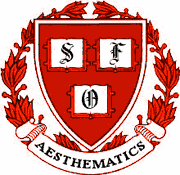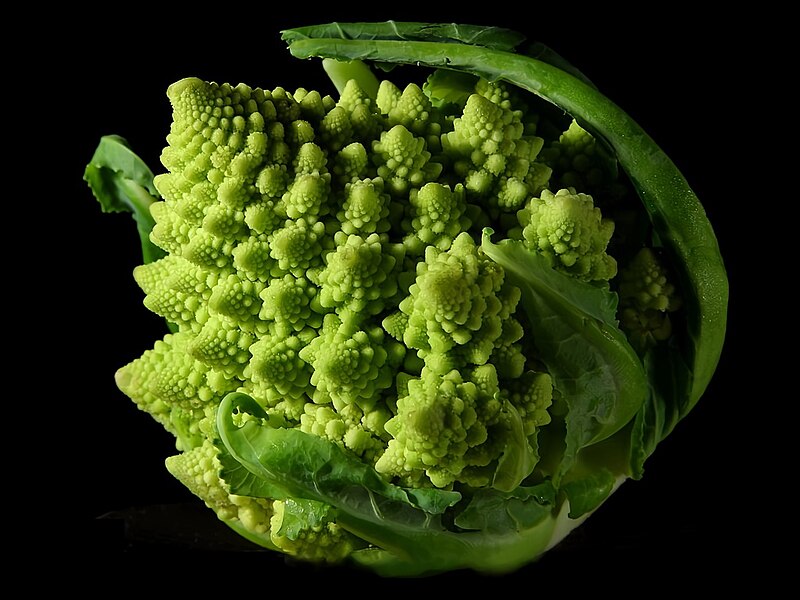Tasks / Manual Fractal Art

Produce a piece of fractal art. Documentation should include both the artwork and a discussion of the mathematics that helped you create it.
The artwork must be executed without the aid of a computer.
1 to 100 players
15 points
Level 1
In the zone of: The University of Aesthematics
Created by teucer
6 completed :: 14 in progress
Interested in collaborating on this: (no one yet!)
this task is retired
Comments
I'm going to do this. Well, I already have, but I'll do it again.
This task should be worth way more points...
Eh, fifteen seems reasonable for something that can be completed by drawing a Sierpinski gasket. On the other hand, that approach won't get you very many votes.
OK, people: a bet is running. Can anyone guess:
1) what's the material on this manual fractal art?
and
2) how was it made?
Because he is too smart and too close to the source I have to exclude Dok/teucer from the contest, sorry.
Well, that and he knows the answer.
THE OVERALL COLOR, AND TEXTURE WOULD SUGGEST GRAPES, YET THE STRUCTURE IMPLIES SOMETHING LIKE A BUSH.
IS IT VEGETABLE?
As I do, in fact, know the answer I will confirm that it is not a vegetable (unlike Anna One's delightful broccoli), and that it is a mineral.
Yeah, I go with metal as well, and it's keeping it's form via magnetism.
For now I'll restrict myself to confirming / denying specifics. It is not iron, and magnetism is not involved.
I, like MK, also thought something like a bush, and it looked to me edible or smokable.
But it is some kind of crystallized mineral? Right? How big are we talking here? Looks mighty small to my eye.

It's not ice, is it?
Well, as the person betting that you guys can figure it out, it seems unfair to play 20 questions :)
Dok's comment is accurate.
"Mighty small" is an accurate description (though that was taken with the macro mode on my camera, not a microscope or something).
That's a very cool picture (is the ice colored, or is that lighting?). And nope, not ice.
Aw, 20 questions is my favorite game.
(It's just red light.)
Speaking of colors and such: LP, is the white balance correct on your photo? Is the background supposed to be white?
(I haven't seen the real thing and the photo side-by-side, but the color looks slightly off to my eye. It is not, however, so far off that I can be sure of this.)
20 questions is indeed fun.
The color balance is not completely correct. Using GIMP's auto white balance produces something where the background color is much whiter, but I think overdoes it. However, the color of the foreground object is not substantially different as a result. Looking at the object and the image side by side has good results (on my screen, anyway).
Miss Derkins says you guys get three questions before we decide the bet one way or the other. It is not a salt.
(Two questions left.)
Or will be, once I figure out how to do the editing I want to it.
Of course, if no one is interested enough to guess... :D
My side of the bet was that the fractal was cool enough and its source unexpected enough that even this crowd couldn't guess about it. But as soon as Anna started asking I feared I was doomed-doomed-doomed. So, guys? Could you prove me wrong already?
I don't think that counts as a yes or no question.
Why am I the only one who wants to know? What is wrong with you people?
It's a challenge from Susy! Yargh!! Science!
I think she wins the bet.
You still have two questions left... You should use them!
That, and I need to stall for time while I go figure out the simplest way to turn a series of stills into a video.
My first thought was coffee crystals, though I don't know how to create them and sublimate the ice away. In keeping with this, it seemed like there were still a couple of questions which had not been confirmed; specifically:
1) Is it a crystal of some kind?
2) Is it edible or smokable, as susy suggests?
So I, at least, would like to know the answer to the second question.
(In any case, it seems like there have only been 8 answers so far, and so 2 more makes for 10, rather than 20 questions...)
My first thought (well, after discounting plants) was iodine.
But, that ain't a question. I'll hold off until the outstanding ones have been answered.
It is not a crystal, and it is not edible or smokable.
That's three questions since Suzy and I formalized our bet. I'm hoping someone comes up with a specific (correct!) guess soonish and I can claim victory :D
If there aren't any other guesses soon, and there is interest, I'd be happy to continue playing 20 questions after conceding the bet to Suzy.
anna one has graciously offered to convert my stills into a video. I've taken her up on this; hopefully there will be video soon.
It's electrolytically grown copper. Essentially electroplating, but with the electrolyte concentration and growth rates too high, it does weird things rather than laying down a nice even plating layer.
The solution is copper sulfate in water. Current (positive conventional current, that is, not electrons) flows into the anode, where the copper wire is oxidized into Cu2+ ions. The ions in the water (mostly from the dissolved CuSO4) migrate toward the cathode, where they are reduced to metallic copper. Because of the (relatively) high voltage and high ion concentration, the ions selectively deposit on the tips of pointy parts, creating the branching fractal structure much like crystal growth. You can also see the effects of the electric field gradient: the growth is largely on the side of the cathode closer to the anode, because that's the region where the field is strongest.
If you want to try it, you can buy copper sulfate at most hardware stores; it's sold as a septic tank root killer treatment. You'll need a power supply somewhere in the range of 0.5-10 volts and 0.1-3A (an appropriate collection of batteries will work, but I recommend rechargeables as you'll go through them in a hurry); varying the current / voltage / ion concentration will produce markedly different effects. That video represents a few minutes; at lower current levels (or larger pieces) it will be slower.
If you want to get a nice shiny copper plate layer, that's harder. I don't remember the details, but it will involve a bath chemistry more precise than "toss a couple spoonfuls of CuSO4 in a beaker of water."
Praxis
view all images for: Manual Fractal Art


Manual Fractals - this time with Legos! NOTE: For the sake of easy reading, the MATH! is in the footnotes. When I saw this task my first thoughts ran immediately to a 3D construction with Legos. I thought it would be possible and possibly not very d...

What is a fractal? I won't try to answer that, except for one observation: the defining characteristic of a fractal is self-symmetry. Should you wish a more complete answer, you'll find an interesting and complex journey ahead of you, filled with s...

The Dragon Curve. Objectively the prettiest of the simple fractals. Protagonist of Jurassic Park. Therefore an obvious choice for painting on Doktor Harmon and JJason's apartment wall. First, we modeled it with toothpicks for practice: Hmm, t...

The Pythagoras Headdress The Pythagoras Tree is based on some pretty simple mathematics. Basically, you start with a square, and then add two more on top of it in a triangle configuration. If you use a right triangle with 45 degree corners, this i...

The Jurassic Park Fractal The Dragon's Curve fractal is also known as The Jurassic Park fractal because each chapter in the book of the same name begins with an iteration of it. The Dragon's Curve by help im a bear and Doktor Harmon is really quite...

Fractals are so cool; I really wanted to do this task. But others before me had already been so creative, so I took some time and thought and researched and found – chromatography (Kearney, et al, 1999). Yes! Large surface area is essential for ...



















I'm not going to pretend I understand the math involved in anything more complicated than long division, let alone in something as complicated as creating fractals. I don't know how they become, but I appreciate them all the same. It was in that spirit that I created this:
